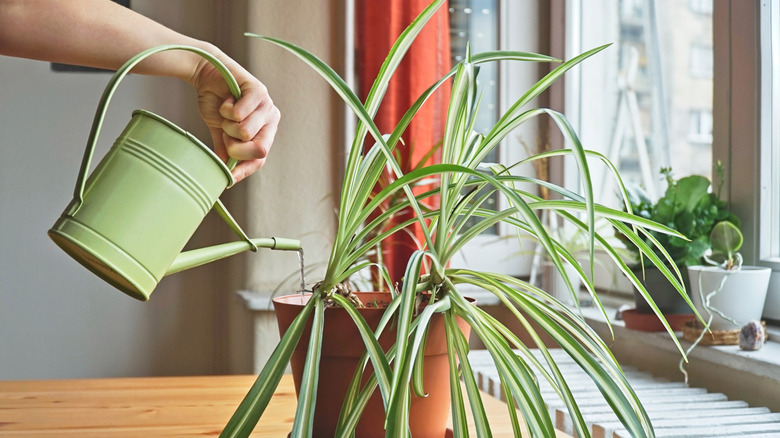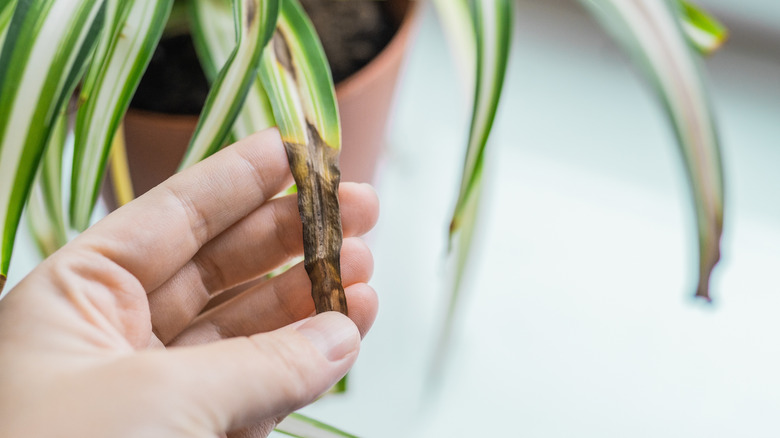How Often To Water A Spider Plant So It Lives Happily For Years To Come
Easy to care for, decorative, and fun, the spider plant (Chlorophytum comosum) is a brilliant, low-maintenance houseplant that is beloved across the world. You don't have to be an expert gardener to keep these fabulous trailing plants alive; they can put up with a lot! However, like any living thing, spider plants need water. For a thriving spider plant, you should allow the soil to dry out slightly between waterings. This means that you will usually water your spider plant around once a week. Before watering your spider plant, check that the top inch of soil in the pot is dry to the touch with your finger. If it is, water the soil thoroughly with room-temperature water. Your spider plant will go into a non-growing phase over the winter months, so it will need less water from November to March. However, keep an eye on the soil and ensure that it is not getting too dry.
An important thing to consider when watering your spider plant is the type and quality of the water you are using. If your spider plant leaves are turning brown at the ends, it may be because the water you are using is treated with fluoride. Spider plants are sensitive to this mineral, so it is best to water them with rainwater or distilled water.
How to tell if you are overwatering or underwatering your spider plant
When it comes to houseplants such as the spider plant, it is essential to examine them regularly for signs of overwatering or underwatering. Houseplant care can be a bit of trial and error at first, especially if you are new to it. By looking at the state of your spider plant and knowing what overwatering and underwatering look like, you can adjust your watering habits to keep your plant happy and healthy.
If your spider plant is wilting or its leaves are yellowing, you may be giving it too much water. Spider plants do not like sitting in water, so always check their saucer or outer pot after watering and remove any excess. Overwatering spider plants can lead to root rot, which will cause stunted growth and discoloration of the leaves. The best way to treat root rot on a spider plant is by lifting it out of the pot, cleaning the roots, and cutting away any brown or mushy ones.
Signs of underwatering a spider plant include dry, curling leaves with spotting and yellowing. Leaves may also look bleached if the plant needs more water. Sometimes, the signs of underwatering and overwatering can be similar, such as browning or yellowing of the leaves. This means that you should check the soil's moisture if you notice these issues on your spider plant to work out which one it is.

